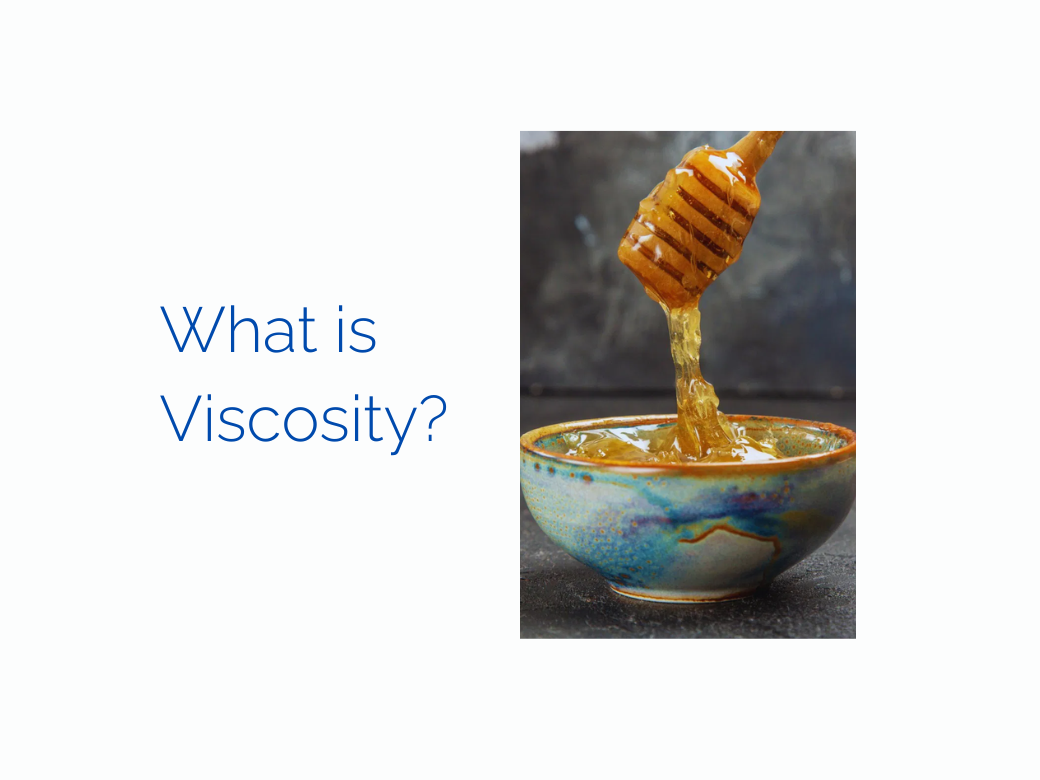
Discover what viscosity is, how it’s measured, and its impact on industries like food, pharmaceuticals, and chemicals. Fluid experts here.
Viscosity is a key property of fluids that determines their resistance to flow. From honey to industrial oils, understanding it is essential for optimizing production processes. In this article, we’ll explain what it is, how it’s classified, and why it’s critical in your industry. Ready to master this concept? Keep reading!
What is Viscosity? Technical Definition
Viscosity is the measure of a fluid’s internal resistance to flow. It arises from friction between its molecules: the stronger the cohesion, the more viscous the liquid. For example:
- Water: Low viscosity (flows easily).
- Honey: High viscosity (slow, dense flow).
Basic Formula:
Viscosity(μ)=Shear StressShear RateViscosity(μ)=Shear RateShear Stress
Types of Viscosity: Dynamic vs. Kinematic
- Dynamic Viscosity (μμ)
- Definition: Resistance to flow under external force.
- Unit: Pascal-seconds (Pa·s) or centipoise (cP).
- Industrial Example: Lubricants for heavy machinery (e.g., 200 cP oils).
- Kinematic Viscosity (νν)
- Definition: Ratio of dynamic viscosity to density (ν=μ/ρν=μ/ρ).
- Unit: Stokes (St) or centistokes (cSt).
Did You Know? Positive displacement pumps (like Q-Pumps QTS) are ideal for fluids with variable viscosities, such as syrups or polymers.
Compare Pump Models:
Q-pumps Brochure |
How is Viscosity Measured? Key Methods
- Rotational Viscometers
- Principle: Measure torque required to rotate a spindle in the fluid.
- Industries: Food (e.g., sauce viscosity control).
- Capillary Tube Viscometers
- Principle: Calculate time taken for fluid to flow through a tube.
- Standards: ASTM D445 (fuels), ISO 3104 (industrial liquids).
- Vibrational Viscometers
- Principle: Analyze changes in vibration frequency.
- Advantage: Ideal for non-Newtonian fluids (e.g., ketchup).
Viscosity Applications in Key Industries
- Food & Beverage
- Texture Control: Mayonnaise (50,000 cP) vs. milk (1 cP).
- Efficient Pumping: Lobular pumps (Q-Pumps QL) for molten chocolate.
- Pharmaceutical
- Precise Dosing: Syrups (e.g., 5,000 cP) require positive displacement pumps.
- FDA Compliance: Sanitary materials for viscous fluids.
- Chemical & Petroleum
- Crude Oil Refining: Classification by viscosity (e.g., light vs. heavy crude).
- Polymers: Solutions with viscosities up to 1,000,000 cP.
Optimize Your Processes:
Factors Affecting Viscosity
|
Factor |
Impact |
Example |
|
Temperature |
↑ Temperature ⇒ ↓ Viscosity |
Oil at 20°C vs. 100°C |
|
Pressure |
↑ Pressure ⇒ ↑ Viscosity (liquids) |
Hydraulic systems |
|
Composition |
Thickeners/reducers modify μμ |
Carbomer gels vs. aqueous solutions |
Recommendation: Use simulation software (e.g., ANSYS) to predict viscosity changes in your operations.
Why is Viscosity Critical in Pumping?
- Pump Selection:
- Low-viscosity fluids (water): Centrifugal pumps.
- Viscous fluids (honey): Positive displacement pumps (Q-Pumps QP).
- Energy Savings: Poor viscosity calculations can increase energy use by 40%.
- Damage Prevention: Overly thick fluids can clog pipes or overheat motors.
Conclusion: Master Viscosity to Optimize Processes
Understanding viscosity isn’t just theory—it’s about avoiding costly operational errors. By applying this knowledge, you can:
- Reduce unplanned downtime.
- Improve product quality.
- Extend equipment lifespan.
Recommended Actions:
- Audit Your Fluids: Measure viscosity under varying conditions.
- Upgrade Equipment: Choose pumps designed for your fluids (e.g., Q-Pumps QTS).
- Train Your Team: Replace technical myths with data.
Ready to Start?
| Schedule a Consultation with Our Experts. |